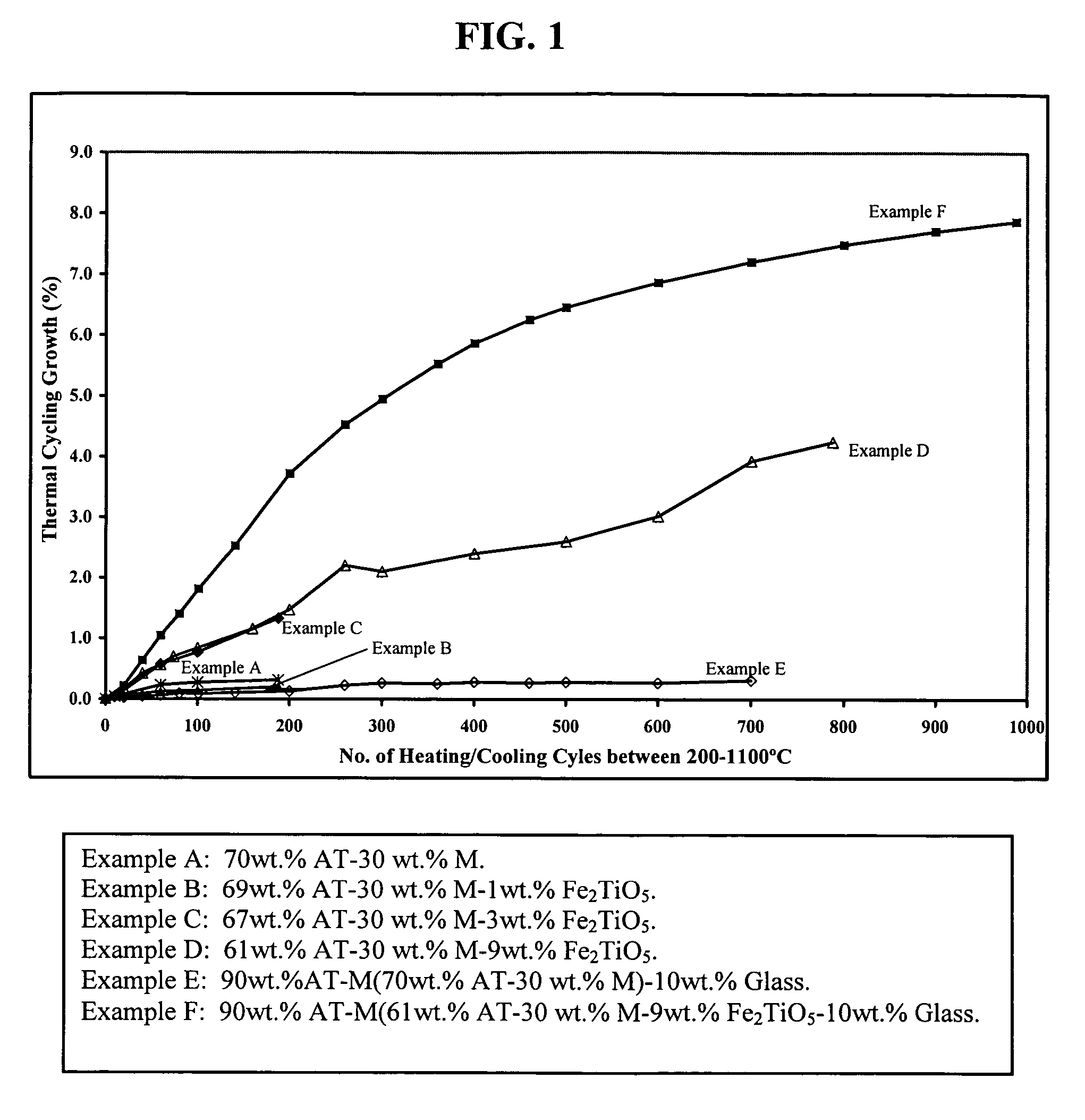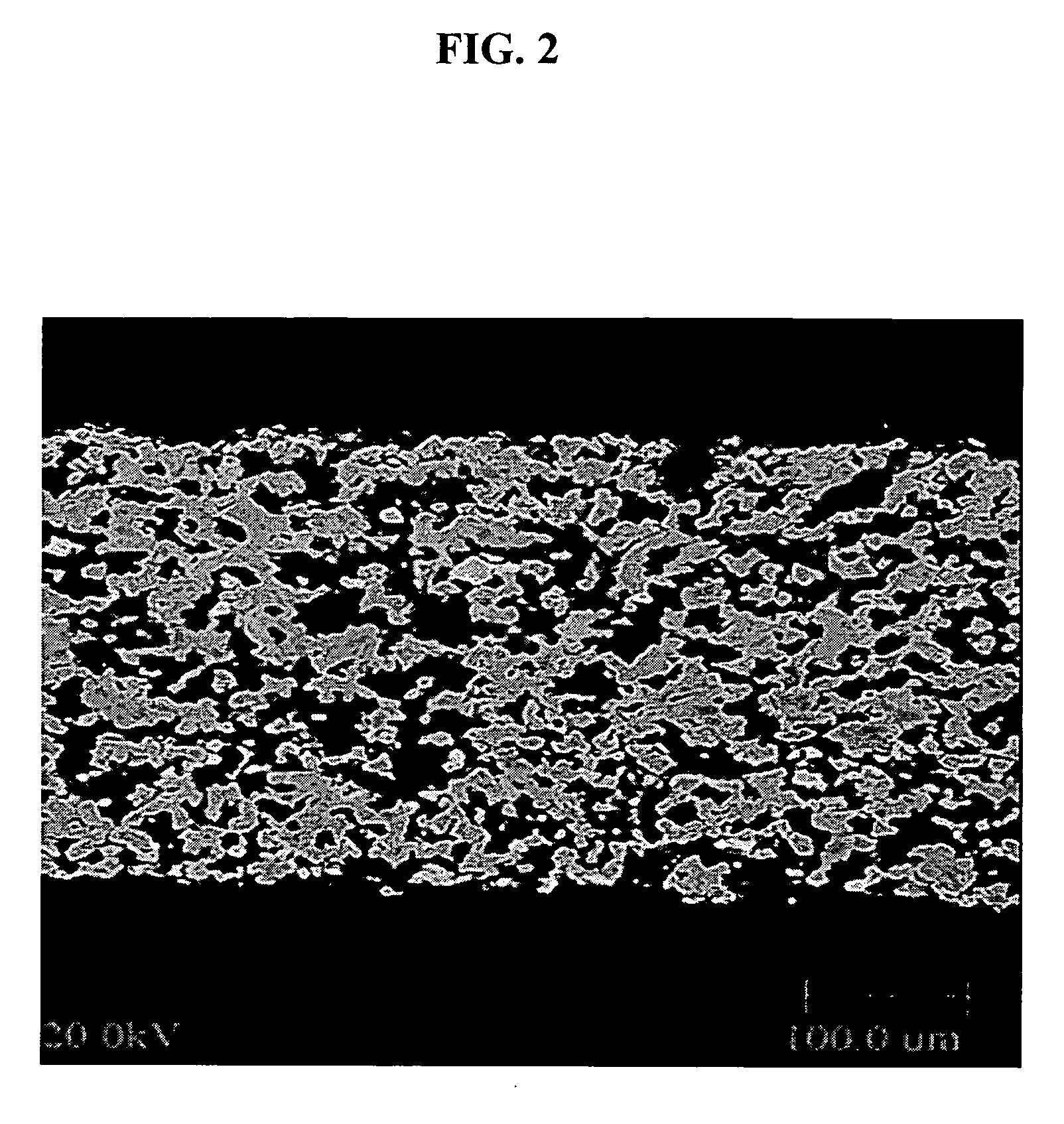Ceramic body based on aluminum titanate and including a glass phase
a technology of aluminum titanate and glass phase, applied in the direction of combination devices, machines/engines, domestic applications, etc., can solve the problems of thermal cycling growth or dimensional change, and achieve the effects of reducing dimensional growth, high thermal decomposition resistance, and enhancing the resistance of aluminum titanate phas
- Summary
- Abstract
- Description
- Claims
- Application Information
AI Technical Summary
Benefits of technology
Problems solved by technology
Method used
Image
Examples
examples
[0035]Table I provides the parts and proportions for samples 1–7. Samples 1–6 have a glass phase (Glass X), the composition of which is provided in Table II. The glass is melted at 1600° C. according to known techniques and then ground to a powder (−325 mesh).
[0036]The dry ingredients including the inorganic raw materials, powdered glass and methylcellulose binder are dry mixed in a muller. The oleic acid and about 20 wt. % water are then slowly added during continuous mixing to provide homogenization and plasticization.
[0037]The plasticized mixture is extruded through a honeycomb die to form honeycomb bodies having approximately 200 cells / in2 and a wall thickness of about 0.016 inch. The bodies thus formed are cut to desired lengths, and heated in an oven at 85° C. until dry. The samples are then fired in an electric furnace over various temperature intervals ranging from 1350–1650° C. with a hold time of 6–10 hours, and cooled by shutting off power to the furnace.
[0038]The samples...
PUM
| Property | Measurement | Unit |
|---|---|---|
| pore size | aaaaa | aaaaa |
| temperatures | aaaaa | aaaaa |
| temperature | aaaaa | aaaaa |
Abstract
Description
Claims
Application Information
 Login to View More
Login to View More - Generate Ideas
- Intellectual Property
- Life Sciences
- Materials
- Tech Scout
- Unparalleled Data Quality
- Higher Quality Content
- 60% Fewer Hallucinations
Browse by: Latest US Patents, China's latest patents, Technical Efficacy Thesaurus, Application Domain, Technology Topic, Popular Technical Reports.
© 2025 PatSnap. All rights reserved.Legal|Privacy policy|Modern Slavery Act Transparency Statement|Sitemap|About US| Contact US: help@patsnap.com



